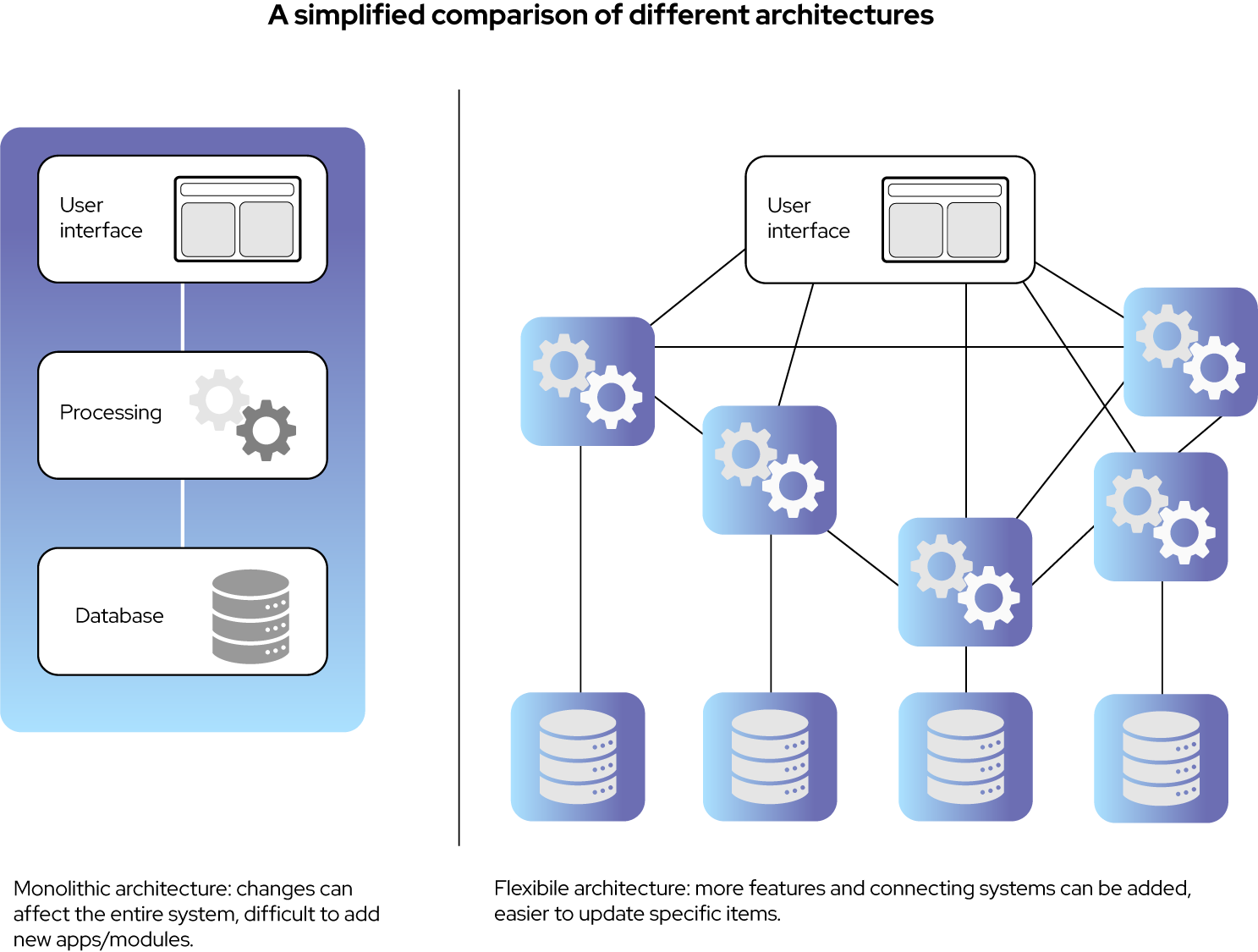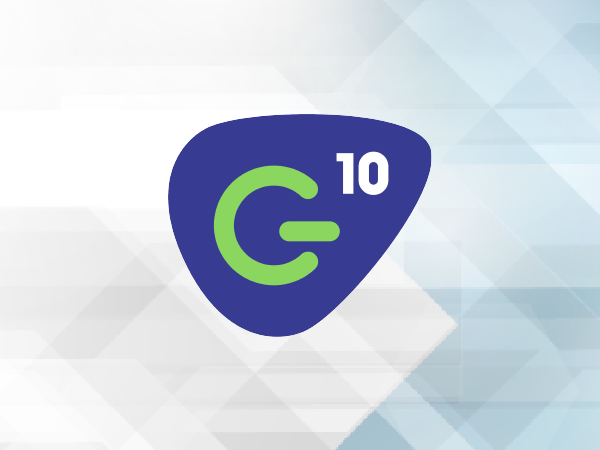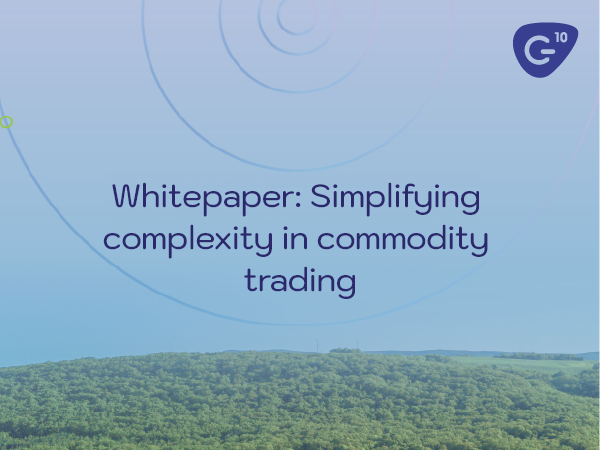When considering CTRM options, questions around system architecture are often left to IT experts, if they are discussed at all, as people focus on the functionality that will make their life easier as well as considerations such as cost and future relationship with the vendor.
However, the architecture of any software system is fundamental and shouldn’t be ignored as it determines all aspects of how the technology will function: how well it can be adapted to your situation, integrations with other software, updates and features.
What is CTRM architecture?
All software has architecture. “Architecture” is simply used to describe the underlying organisation that determines how the different components of a piece of software interact with each other and other systems. Because architecture is difficult or impossible to change, it also guides how, and how easily, the software can evolve.
In the world of commodity management, architecture is particularly important because it has evolved so much in the decades since ETRM and CTRM emerged as software categories. The earliest C/ETRM systems were built before flexible, collaborative architecture was common, which is why you may see them referred to as “monolithic”. A monolithic system is designed on the premise that it will stand alone, with no forward planning for integrations with ERP/accounting software, and no design for additional modules or apps to provide customisation and additional features.
These systems were usually designed for a particular commodity, and often even for a particular workflow for that commodity, and their inflexible architecture means that even now it can be very difficult to adapt the system if your company’s processes are not the same as its expected workflows.

Modern commodity management systems such as Gen10’s Commodity.Manager are much more flexible, because when they were first being developed the decision was made to use a more flexible architecture. These systems can be broader than simple CTRMs as they incorporate more activities, such as logistics and supply chain management. Without going into technical detail, the best modern commodity management software uses a series of apps or modules that all share data between themselves and other technologies to create a commodity management ecosystem.
This ecosystem approach has even been referred to as “CTRM as an architecture”, with the idea that one single system cannot cater to the needs of every company and every commodity. The CTRM solution therefore becomes the architecture: passing data seamlessly and instantly between apps, allowing users control over how they process data and allowing you to choose the best apps for your business, safe in the knowledge that they will create one seamless commodity management process.
What about cloud CTRM?
Cloud CTRM is a type of architecture, and a particularly useful one to be aware of. Cloud CTRMs are delivered as online services that you access through your web browser so are available securely anywhere with no software to install. Cloud technology requires less maintenance, is easier to update and can be both more secure and more cost-effective than a traditional on-premise CTRM.
However, some CTRM suppliers may offer cloud solutions that are not using cloud architecture. This is important because it is the architecture that determines how well your system can adjust to future innovations. So some vendors with less-flexible older systems can offer them via a web browser or hosted on their own servers but they have not changed the underlying infrastructure, so you may find you run into problems down the line when you want to add other services to your CTRM.
Find out more in our cloud CTRM explainer.
Why CTRM architecture matters
Even though it’s rarely a consideration for buyers, architecture is essential because it determines how the system works now and how well it can adapt in future. If the architecture is designed with flexibility in mind it can be much easier to adapt your CTRM to your business, to integrate it with your other systems and to add new features as system develops.
Software developers explain that a flexible architecture is actually more stable and has greater longevity than an inflexible architecture as it allows for better development. This is because there is less fundamental reworking for each update that improves functionality, reducing costs to the client and meaning that developers can focus on making the changes that make a difference rather than updates that the client does not see.
About Gen10’s architecture
At Gen10, we believe it’s important for our software and therefore our architecture to be as flexible as possible. The flexible architecture we have created is at the core of many of the features that make Gen10 different.
Customising without coding
Your business is unique, and so are its processes. Unlike some CTRMs, we build the automation and workflows within your commodity management system around your existing processes so that they follow the way your people do business. And our flexible architecture means this is done without any additional coding, so they are set up faster, easier to update and don’t affect you getting the latest product updates, as can happen with hard-coded customisation.
A commodity management ecosystem
Our APIs and web services enable integration with other systems and services, so your data flows between them as if it was one system and you get better value from all your systems. This ecosystem can be adapted and added to, meaning you can develop and deploy new commodity management apps in a rapid, cost-effective manner and can adopt other new technologies, including ERP, general ledger or supply chain management tools within your ecosystem.
Better, more useful data
Generating data is not enough, it is only useful if your people can access it and gain useful insights. Gen10 commodity management technology shares data across your ecosystem and allows different people the insight they need. Traders can view real-time MtM and what-if analyses, executives can instantly view group position reports without accessing the CTRM, and data scientists can create live feeds into business intelligence tools to provide greater insight.
Rapid, remote implementations
Cloud technology combined with an architecture that allows for customisation with minimal development means your commodity management technology can be implemented remotely and quickly, often taking between 3 weeks and a few months to be completed. This is not a one-off benefit as it also means that updates are quick to roll-out with no involvement from your IT team, so your people are always using the most up-to-date technology.
Find out more about these rapid implementations and why modern commodity management is more important than ever with our webinar co-hosted with ComTech Advisory – watch on-demand now!
Commodity management architecture is rarely discussed, but it really is the fundamental aspect of any system, acting as either the major limiter or the major enabler of quality, customisation and future development. And it doesn’t take an IT expert to understand it either. So if you’re looking for CTRM or commodity management, be sure to check the architecture – much like when buying a car, look below the hood to see what’s powering it!
Want to read more?
Subscribe now for monthly updates
By submitting your details you agree that we can store your data and communicate with you. You can opt out of these communications at any time. Read all in our Privacy Policy.



